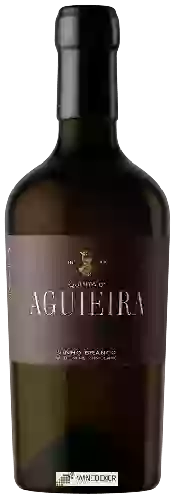The Winery D Aguieira of Beiras

The Winery D Aguieira is one of the best wineries to follow in Beiras.. It offers 9 wines for sale in of Beiras to come and discover on site or to buy online.
Looking for the best Winery D Aguieira wines in Beiras among all the wines in the region? Check out our tops of the best red, white or effervescent Winery D Aguieira wines. Also find some food and wine pairings that may be suitable with the wines from this area. Learn more about the region and the Winery D Aguieira wines with technical and enological descriptions.
How Winery D Aguieira wines pair with each other generally quite well with dishes of beef, lamb or game (deer, venison) such as recipes of kafta bil saniyeh (lebanese dish), leg of lamb with garlic and rosemary or veal blanquette à l'ancienne.
Beiras (Beira) is a traditional administrative region in the northern half of Portugal. It is also the name of the IGP, or Indicacoes Geograficas Protegidas, wine classification (formerly known as Vinho Regional) which covers the region as a whole. A wide range of wines are made in Beiras – red wines from the region are typically Rich, deeply colored wines made from Baga, Castelão, Rufete (Tinto Pinheira), Merlot, Cabernet Sauvignon, Syrah and Touriga Nacional, and are sometimes fortified to emulate their more famous Oporto cousins. Whites are most often based on Fernão Pires and Bical, the latter being a small-berried variety with the affectionate nickname Borrado das Moscaos ('fly droppings').
Beiras is relatively wide, as Portuguese regions go, and stretches from the Atlantic coast right to the border with Spain (about 100 miles/160km). It was traditionally a single region, but was later split into Beira Litoral (coastal Beira) and Beira Interior (inland Beira). The region encompasses several DOC (Denominação de Origem Controlada) titles, among them Bairrada, Beira Interior and the famous Dão.
Terroir varies greatly in the Beiras region, which touches both sides of Portugal and takes in coastline, rivers, valleys, lakes, plateaux and low mountains.
The same is true of the Climate – although heavily influenced by the Atlantic in the maritime west, the continental draw of Spain's hot, DryCenter is strong in the east. In the west are the sandier soils of the coast, slightly inland are the limestone and clays of Bairrada, and the center has the alluvial soils of the Dão, Mondego and Ceira river valleys.
Baga is arguably the most important red wine grape in Beira. It typically makes up the lion's share of red wines, particularly in Bairrada, where it accounts for more than three-quarters of the red plantings.
Planning a wine route in the of Beiras? Here are the wineries to visit and the winemakers to meet during your trip in search of wines similar to Winery D Aguieira.
Négret de Banhars noir is a grape variety that originated in France (Aveyron). It produces a variety of grape specially used for the elaboration of wine. It is rare to find this grape to eat on our tables. This variety of grape is characterized by bunches of medium to large size, and grapes of medium to large caliber. Négret de Banhars noir can be found in several vineyards: South-West, Cognac, Bordeaux, Provence & Corsica, Rhone Valley, Loire Valley, Savoie & Bugey, Beaujolais.
Kévin Tessieux, President of the appellation’s winegrower union, shares his perspective on the Saint-Véran appellation and tell us about the origin of its name. This video is taken from the “Rendez-vous avec les vins de Bourgogne” program broadcasted in June 2021. Retrouvez-nous sur les réseaux sociaux : Facebook : https://www.facebook.com/VinsdeBourgogneofficiel Twitter : https://twitter.com/VinsdeBourgogne Instagram : https://www.instagram.com/vinsdebourgogne/ LinkedIn: https://www.li ...
Sequence from the video « At the heart of the Mâcon terroir » which offer a stroll at the heart of the Mâcon terroir. It offers a focus on Mâcon-Chaintré, one of the 27 geographical denominations of the Mâcon appellation. Travel through the terroirs of the Mâcon appellation by watching the full video : https://www.youtube.com/watch?v=GF20y1aBZh8 Both are available in French and English. Our social media: Facebook: https://www.facebook.com/BourgogneWines Twitter: https://twitter.com/BourgogneWi ...
Sequence from the video « At the heart of the Mâcon terroir » which offer a stroll at the heart of the Mâcon terroir. It offers a focus on Mâcon-Mancey, one of the 27 geographical denominations of the Mâcon appellation. Travel through the terroirs of the Mâcon appellation by watching the full video : https://www.youtube.com/watch?v=GF20y1aBZh8 Both are available in French and English. Our social media: Facebook: https://www.facebook.com/BourgogneWines Twitter: https://twitter.com/BourgogneWine ...
Place name or castle subject to a classification (Médoc classification of 1855, classified growths of Alsace...)